If your gluten-free bread turns out gummy, dense, doesn’t rise, or collapses in the oven, you’re not alone. I’ve been troubleshooting these problems for over 15 years, and my gluten-free bread troubleshooting guide will walk you through exactly what went wrong and how to fix it, based on real testing and reader feedback.
This post may contain affiliate links. Please read our Disclosure Policy.
New to gluten-free bread baking? Don’t miss my Ultimate Guide to Gluten-Free Bread Recipes That Work because it’s packed with tested tips, flour advice, and reader-favorite recipes.
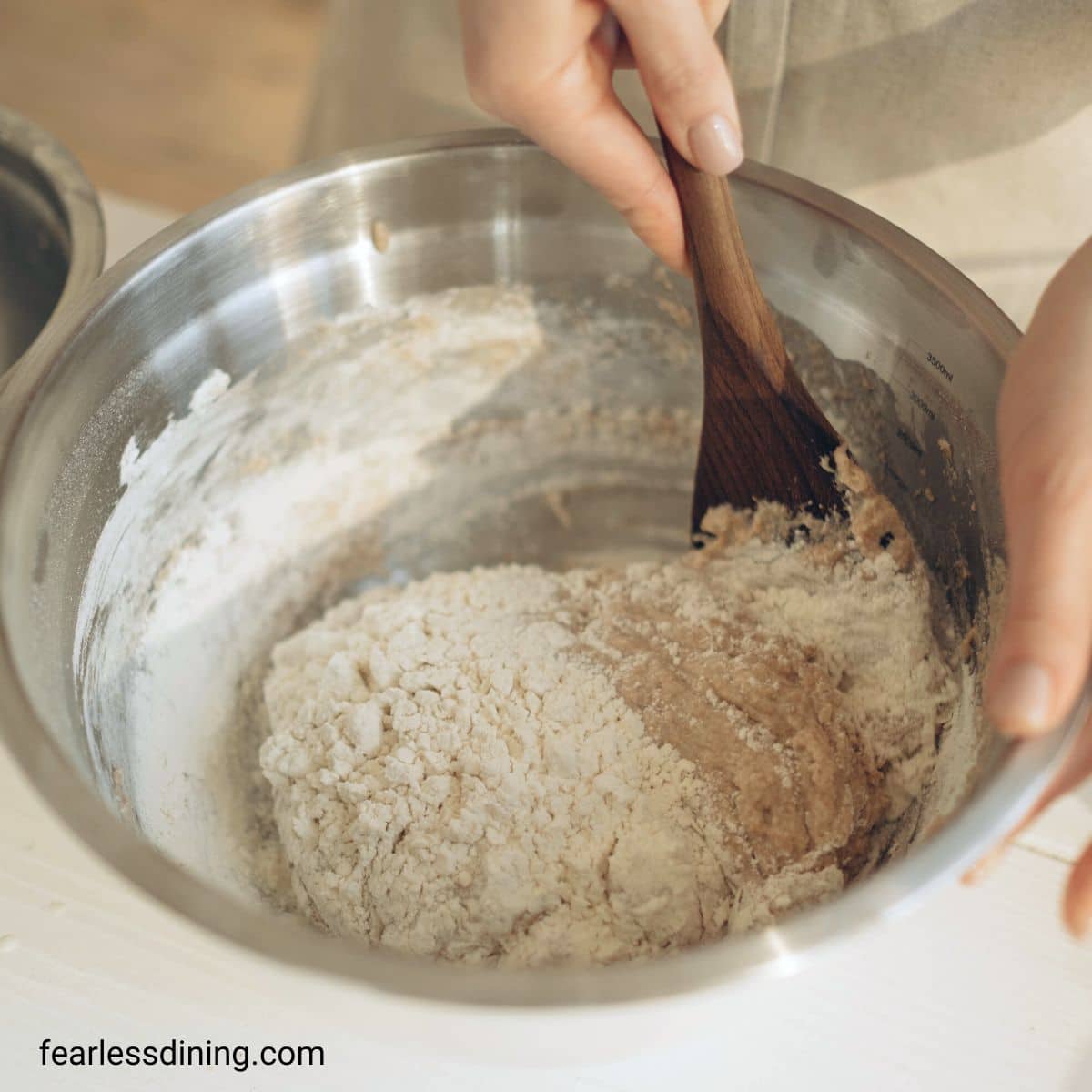
❤️ Sandi’s Summary
Gluten-free bread was one of the hardest things for me to learn how to make when we first went gluten-free way back in 2010. Over the past 15 years, I’ve tested dozens of gluten-free flour blends, binders, and baking methods. I created this guide to help troubleshoot the exact issues I used to face. Whether your bread turns out gummy or collapses in the oven, or for any other reason, I’ll walk you through what went wrong and how to fix it.
One of the biggest issues I hear people struggle with is baking gluten-free bread. I totally get this struggle because when I first started to bake gluten-free, everything was different when it came to gluten-free baking! Every flour blend will perform differently in a gluten free bread recipe. This is because every gluten-free flour blend has a different weight, depending on the starch content.
Every gluten free flour blend also has a different grain-to-starch ratio, and this can affect so many things when you bake gluten free bread. Different grain-to-starch ratios affect how much liquid you will need to make the bread and the structure of the bread. Some flour blends need a LOT more liquid in a recipe than others.
Let’s break it down by problem and solution. I will try to give the best fixes to try.
I have a lot of baking resources to help you on my blog. These Gluten-Free Baking Tips can help you learn how to become a better gluten-free baker. If you are new to gluten-free, be sure to check out my Gluten-Free Resources page for helpful articles to get you started.
Do the tools you use matter?
Absolutely. Having the right mixing bowls, digital scale, and pans (especially Pullman or loaf pans with high sides) can dramatically improve your results. See all of my favorite gluten-free bread tools here. I also have a lot of key sourdough-making tools I recommend.
What gluten-free flour blends work with yeast?
One of the biggest reasons people fail when baking gluten-free bread is because of the gluten-free flour blend brand that they use. Many gluten-free flour blends do not work with yeast, but very few people are aware of this.
Always read the back of the flour bag and check the brand’s website. Popular blends like Bob’s Red Mill 1:1 and King Arthur Measure for Measure do not work with yeast. Bob’s states this on their website, not on the product itself, while King Arthur states it on the back of their flour bag.
Here are a few gluten-free flour blends that work with yeast:
- Authentic Foods Steve’s Gluten-Free Bread Blend – This is my all-time favorite gluten free blend for bread, but it will not work in a bread machine.
- Better Batter – This is a great blend for making bread.
- Jules GF – I have only tested this blend in my gluten-free sourdough bread recipe.
- Namaste, Gluten-Free Flour
- Cup4Cup – Note: Cup4Cup has recently undergone a formulation change, and I haven’t yet tested this new flour formulation in my yeast recipes. Although Cup4Cup’s website states their original gf flour blend doesn’t work with yeast, I have had excellent luck with this blend. Their Wholesome Flour Blend works well with yeast as well.
- My DIY Gluten-Free Flour Blend also works really well in yeast recipes.
- I also love using my homemade Gluten-Free Whole Grain Flour Blend.
- Pillsbury Gluten-Free Flour Blend
My Gluten-Free Bread Machine Bread recipe is a great option with directions for both the bread machine and oven baking.
How to Adjust Your Dough as You Go:
Not all blends behave the same way in terms of grain-to-starch ratios, so sometimes you’ll need to tweak things mid-recipe to make your bread recipe work out. Here’s how:
- Not sure? Your bread dough should be soft and tacky, but not wet like cake batter. If you are using Authentic Foods Steve’s GF Bread Blend, the dough should be completely workable enough to make braids.
- Too sticky? Add 1 tablespoon of flour at a time and gently mix it into the dough.
- Too dry or cracking? Add 1 teaspoon of warm water at a time and work it into the dough until the dough is wetter and easier to work with.
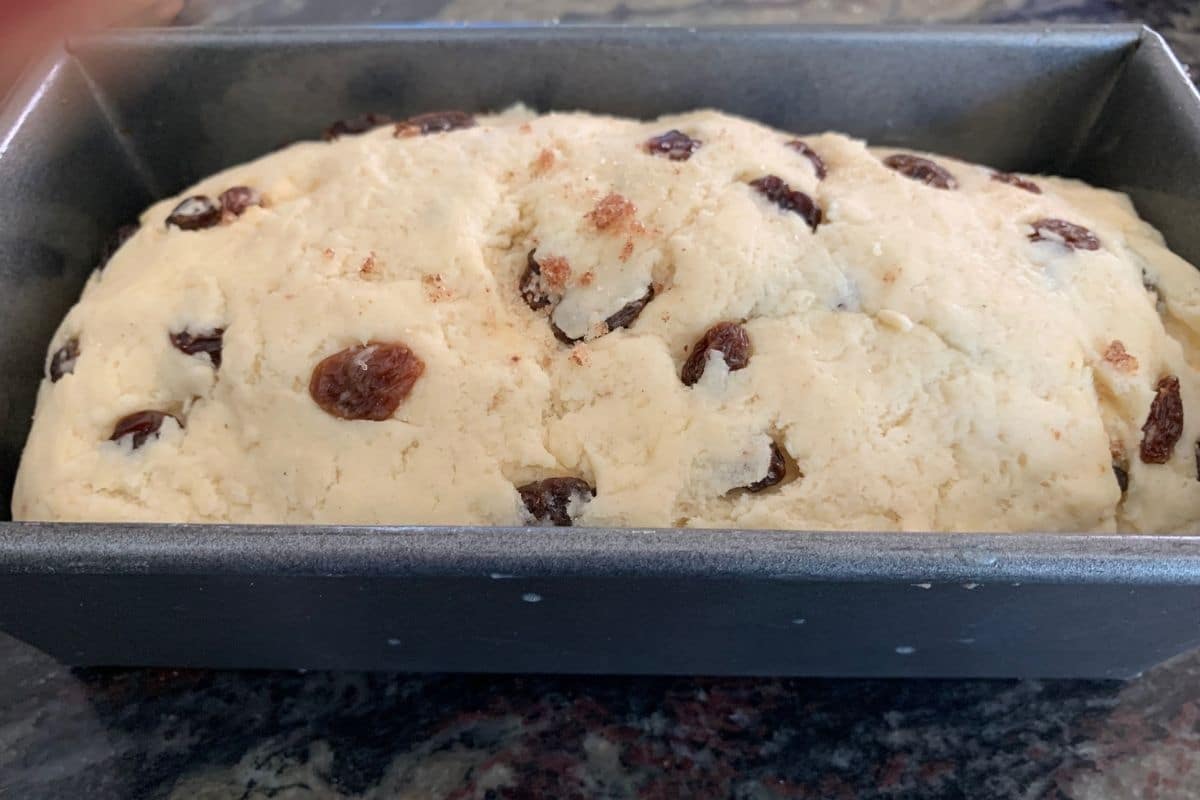
Why is my dough sticky?
Sticky gluten-free dough usually means there’s too much liquid or you’re using a starchy flour blend. This happened to me when I was testing Cup4Cup in one of my bread recipes that used Authentic Foods Steve’s Bread Flour Blend. That particular flour blend needs a lot more liquid, and as a result of that test, the test with Cup4Cup had sticky, wet dough.
Start by adding a few tablespoons of gluten-free flour and mix gently until the dough holds its shape.
Why didn’t my gluten-free bread rise?
If your gluten free bread didn’t rise, here are some things to check:
- Was the yeast expired? Did you use the right type of yeast that the recipe called for? (Active dry yeast or Rapid-rise yeast.)
- What temperature was the water you proofed the yeast in? The water should be no hotter than 110º F.
- Did you add some sugar, honey, or something for the yeast to eat to the water you proofed the yeast in?
- Did you shape your dough, then rise the dough, or did you rise the dough, then shape it? You only get one good rise with gluten-free dough, so it is critical to shape the dough before the big rise.
- How did you rise the dough? If it is winter, it will be much harder for the yeast to grow. I always preheat my oven to 200ºF and then turn the oven off. I rise my shaped bread in this nice warm oven. (Cover it with plastic wrap so the dough doesn’t dry out.)
Additionally, it is worth noting the type of yeast you use. Always check that it is gluten free. Most yeast is gluten-free, but the Red Star “Platinum” is NOT gluten-free.
👀 Sandi Says: You only get one good rise from gluten-free dough, so be sure to shape it or get it into the loaf pan before it rises!
Email This Recipe To Me!
Why did my gluten-free bread turn out gummy inside?
Many ask why their gluten-free bread is gummy. This can have several different causes, and I know having a bread turn out gummy is really frustrating. Here are common reasons:
- The most common reason your bread is gummy, sticky, or doughy in the middle is that your bread didn’t bake long enough. Gluten-free dough needs to be baked much longer than regular bread dough.
- Your recipe had a high level of liquid ingredients.
- You used a very starchy gluten-free flour blend.
- You cut the bread while it was still hot.
| Binder | Use | Typical Amount Used |
| Xanthan Gum | Adds structure and binding | 3/4 to 1 teaspoon |
| Guar Gum | Xanthan gum alternative | 3/4 to 1 teaspoon |
| Psyllium Husks | Adds structure and retains moisture, especially in bread recipes. | 16-18 grams. |
Why did my gluten-free bread fall apart?
If your gluten-free bread is falling apart, it’s likely because you didn’t use a binder in the flour blend. Gluten in wheat is the “glue” that holds regular baking together. Gluten-free flour doesn’t have the same “glue,” so you have to add it.
Ensure the gluten-free flour blend contains either xanthan gum, guar gum, or psyllium husk. Note: Authentic Foods Steve’s Gluten-Free Bread Blend uses vegetable fiber, which includes psyllium husk. If your blend doesn’t have one of these, you must add it to your ingredients.
Read more about how binders work in gluten-free baking.
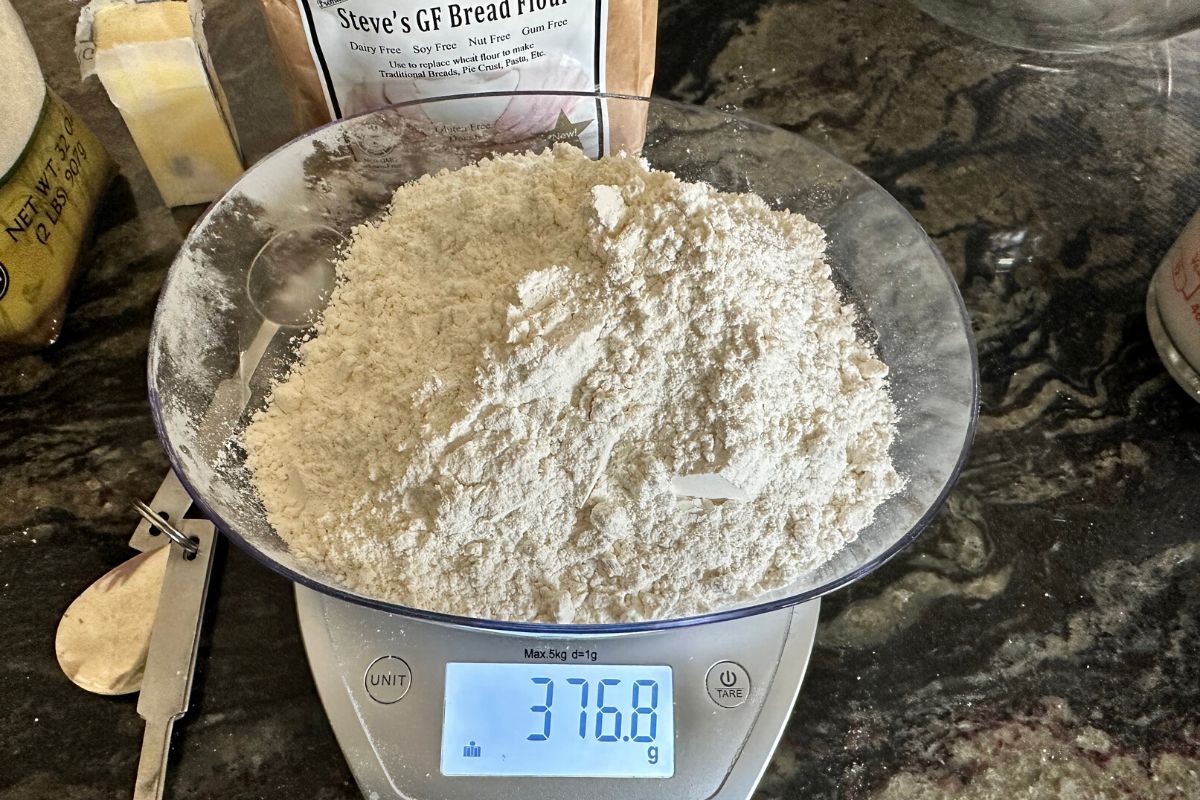
Why is my gluten-free bread dense?
If your gluten-free bread turned out dense, it’s likely you didn’t use enough liquid to make the dough. It is critical to measure your dry ingredients accurately. Measure for weight when you can.
If you don’t have a digital scale, I recommend using either the spoon or the leveling method to measure your flour.
Spoon Method: Alternatively, you can use a spoon to fill the measuring cup. Use a knife to level along the top to remove the extra flour. Leveling Method: Place the measuring scoop into the flour and fill it. Do not pack the flour. Use a knife to scrape along the top to remove the extra flour.
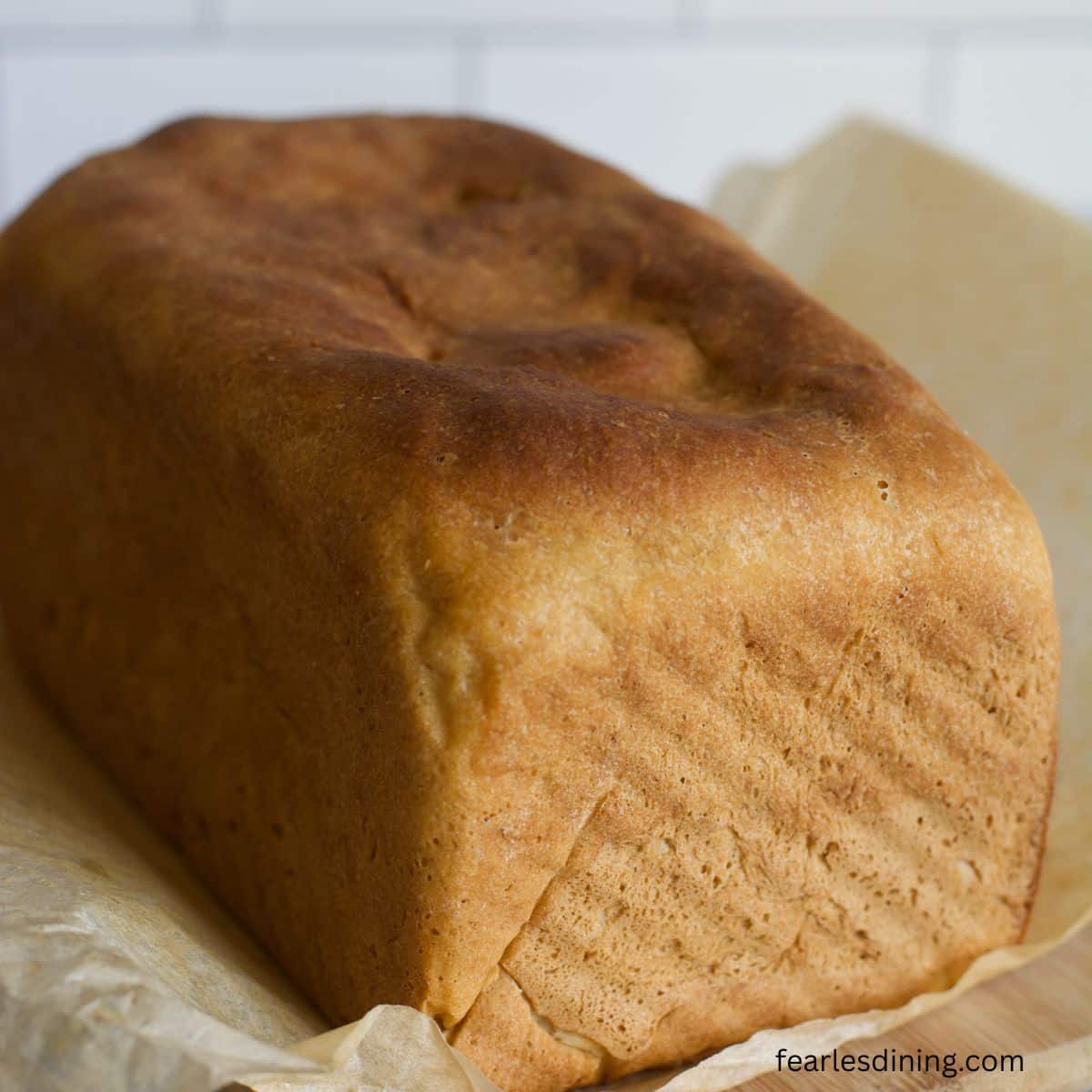
Why did my gluten-free bread collapse during baking?
If your gluten-free bread collapsed during or after baking, it is likely due to either too much liquid in the bread dough or over-proofing of the yeast. This has happened to me a few times, usually early on in testing a new gluten-free bread recipe.
Look at the photo above. This is an early test of gluten-free Hawaiian bread I was working on. It had way too much liquid. Once I fixed this problem, the next loaf turned out perfect.
You can also read my guide to the Best Gluten-Free Flour Blends. I discuss the gluten-free flour blends and which are best for which types of recipes.
Why does gluten-free bread taste sour?
This problem is not as common for gluten-free bread, but if you do taste a sour taste and you didn’t make sourdough, you probably let your bread dough sit too long. The yeast over-fermented.
Does the weather affect gluten-free baking?
Yes! In humid environments, you may need slightly less liquid. If your house is cold, proofing will take longer. High-altitude baking will also require adjustments to liquid, rise time, and baking time. Keep notes based on your kitchen environment because small changes make a big difference.
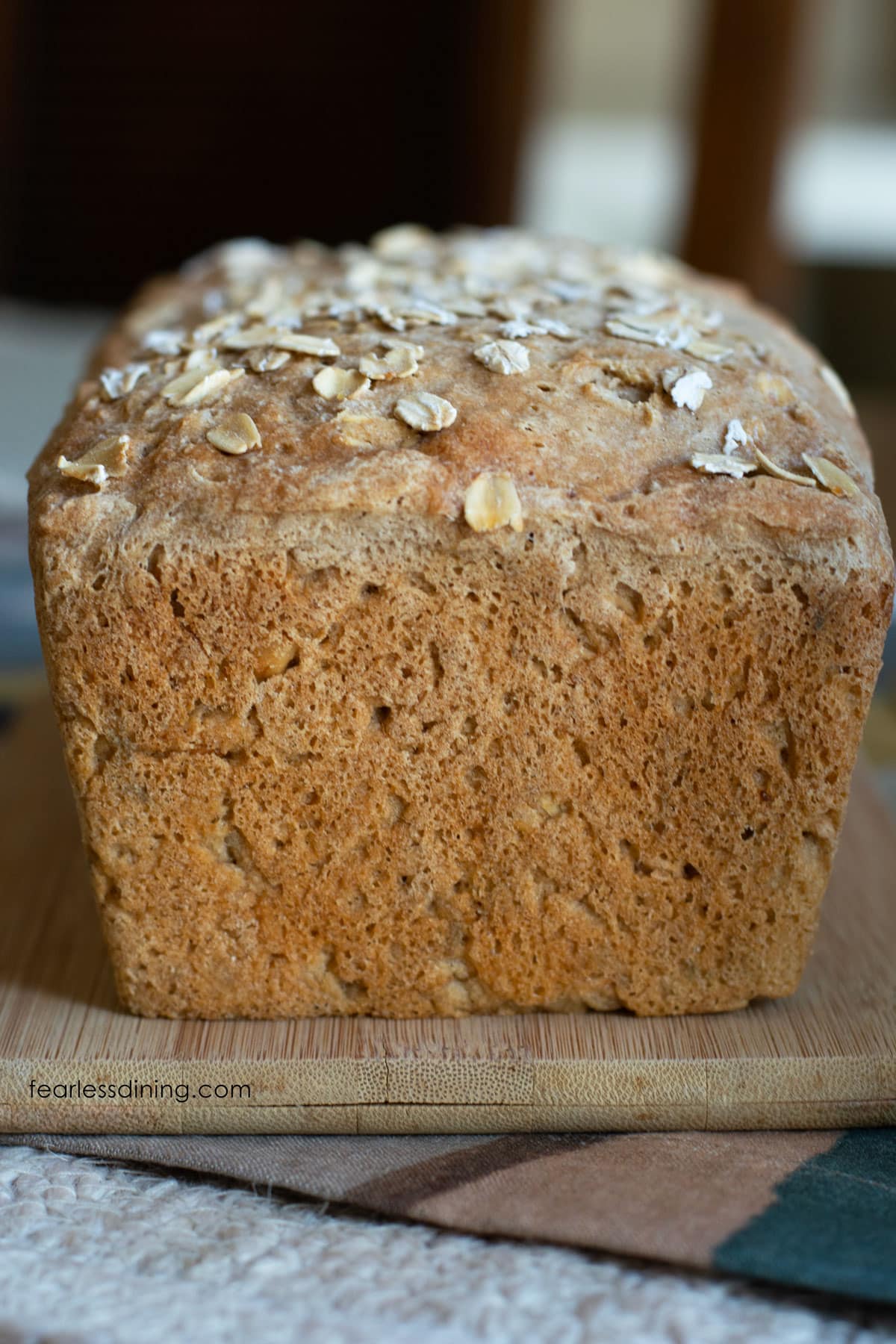
If you love to bake, read my Gluten-Free Cake Troubleshooting and Gluten-Free Cookie Troubleshooting Guides, too!
Great Gluten-Free Recipes To Try:
- Gluten-Free Garlic Knots – These are delicious and go well with any pasta sauce.
- Gluten-Free Oat Bread – This is a great loaf with the perfect texture.
- Gluten-Free Brioche – This brioche is fluffy and delicious.
- Gluten-Free Cinnamon Raisin Bread – This fluffy, sweet bread is one of my family favorites!
Need help troubleshooting your gluten-free bread?
Leave a comment with what happened and what flour blend you used — I’m happy to help you figure it out!


Hi Sandi, I am new to the whole gluten free way of living. I bought a bread maker and followed the ingredients exactly and my bread is still quite dense. Is there a trick to making not so dense. Any response will be grateful appreciated
Thank you Elle
Hi Elle,
I am happy to troubleshoot, but it is difficult without knowing what recipe you used. Please let me know: 1. what brand bread maker do you have and does it have a gluten free setting? 2. What flour blend are you using? 3. Are you swapping any ingredient in the recipe? 4. Did you check the expiration date on the yeast?
I am having a blast making GF / Dairy F, bread in my Bread Machine. I put in many things and it typically comes out Good. Maple syrup, cinnamon, tart cherries, walnuts and I use Rice milk, olive oil, brown sugar, 4 eggs, and a flour blend that is cost effective, Premium Gold Gluten Free All Purpose Flour, 5 Pound ( <$14) now. it has xanthin gum in it already. I just introduced a half cup of beet powder, wow is it RED. THE Problem: when it was done, I pulled out the bread and pan, turned it upside down, and the top 3/4 of the loaf ripped apart and the bottom of the loaf stuck to the pan. Do I need more or less liquid ? Do I need to let it sit in the pan for an hour ?
Hi John, Thanks for your note. I haven’t tried adding vegetable powders and ingredients you mention. It is hard for me to advise without seeing photos of your dough, etc.
Hi Sandi
We can’t obtain Steve’s flour in Australia. However have tried numerous blends with very little success!
I still have hope !
I’m trying your recipes out now and hope I get there
I appreciate you being generous with your GF recipes
All the Best
Ingrid
Thank you so much. Please feel free to email me if you have any questions as you are testing the flour blends you have. admin@fearlessdining.com
Sandi, you are a godsend and a saving grace! Just this morning, I told my husband I’ve had SO MANY failures at bread baking and I’d love to be able to master this skill. Your troubleshooting guide is fabulous. It answers a plethora of questions I’m sure many gluten free bakers have on their minds. Thank you for your time and talent and continuously offering invaluable tips on your blog!
Thank you so much for your kind words. I get so many questions about baking bread in my FB group, I decided to collect them all and write this article to help.
Hi Sandi. I just received a GF Italian Bread Flour from Italy and lists as one of the ingredients , “gluten free wheat starch “but they say it’s certified GF Flour. Have you heard of that?
Hi Mia, technically wheat starch is gluten free and tests below the 20ppm level. It has something to do with the gluten removal process. That being said, many still do react to it, myself included. This article has a lot more info: https://www.bidmc.org/centers-and-departments/digestive-disease-center/services-and-programs/celiac-center/celiacnow/nutrition-and-the-gluten-free-diet/label-reading/wheat-starch-and-the-gluten-free-diet